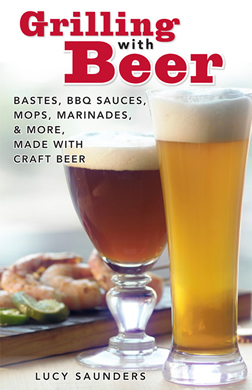Gena at BCLK says that the addition of beer adds "richness and moisture and balances the sweetness of the sugar." She topped these little morsels of heaven with a cream cheese glaze and says that they are a "crowd-pleasing, not-too-sweet dessert."
Gena made these cupcakes with Guiness, but I suggest using something a little more exotic, like Young's Oatmeal or Double Chocolate Stout or Old Rasputin Russian Imperial Stout - something big and stouty and chocolatey and coffee-ish. Here's the recipe:
Cake
- 1 cup of good craft or artisanal Stout, Chocolate Stout or Imperial Stout
- 1 stick, plus 1 tb, unsalted butter
- 3/4 cup unsweetened cocoa
- 2 cups dark brown sugar
- 3/4 cup sour cream
- 2 eggs
- 1 tb vanilla extract
- 2 cups flour
- 2 1/2 tsp baking soda
Glaze*
- 8 oz cream cheese
- 1 1/4 cups confectioners' sugar
- 1/3 cup milk
Preheat oven to 350; butter a muffin tin.
Combine the beer and the butter, chopped into 1-inch chunks, in a large sauce pan, and heat to melt the butter. Remove from heat, and whisk in the cocoa and sugar. In a bowl, whisk the sour cream with the eggs and vanilla, then add to the beer mixture. Sift together the flour and baking soda, and fold into the batter. Pour into muffin molds and bake for 25 minutes, or until inserted cake tester comes out clean. Let stand 10 minutes, remove from muffin tin, and cool completely on a rack.
Using a mixer, whip cream cheese until smooth, sift in sugar, and beat. Add milk, and beat until smooth. Spread glaze over cooled cupcakes.
*To create a thinner glaze, use a tablespoon or two more milk; for a topping more akin to icing, use less milk, and perhaps more sugar. In either case, add a little sugar or milk at a time, mix, and check for desired consistency.







